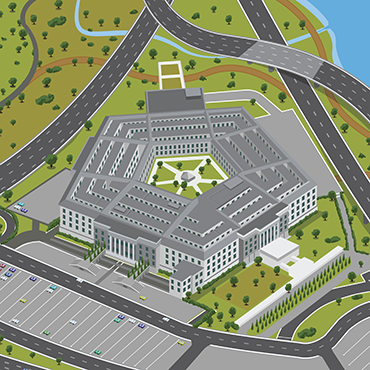Pentagon boosts emerging tech spend

The Department of Defense spent $7.4 billion in fiscal year 2017 on cloud computing, big data and artificial intelligence technologies, according to a recent Govini report.

The Department of Defense spent $7.4 billion in fiscal year 2017 on cloud computing, big data and artificial intelligence technologies, according to a recent report by public-sector contracting analytics firm Govini.
That represents a 32 percent increase since 2012, with more specific technologies like quantum computing, virtual reality and machine learning seeing some of the bigger boosts in investment. While cloud, AI and big data all saw spending jump over the past five years, AI accounted for the bulk of the increase in spending and is framed in the report as one of the "technological cornerstones" of DOD's long-term strategy for military dominance and deterrence.
In the report's forward, Robert Work, former deputy secretary of defense, argued the successful militaries of the future will leverage a handful of emerging technologies to essentially automate the warfighter, not only for vehicles and aircraft but also for decision-making and battlefield intelligence.
"By gradually reconfiguring Joint Force battle networks in these ways … [DOD] will be able to sense and perceive battlefield patterns more readily and rapidly, facilitate more timely and relevant combat decisions, and apply more rapid, discreet and accurate effects with less loss of life," Work wrote.
Investments in advanced computing capabilities saw an 86 percent jump, totaling almost $425 million in 2017. More than a third of that spending is headed up by the Defense Advanced Research Projects Agency, which earlier this year put out a trio of procurements totaling $300 million to devise new ways to extend the microprocessor revolution that has underpinned the computer age. Because advanced computing can be used to power and enhance AI methods like deep learning and autonomous vehicles and systems, the authors said they expect DOD spending to continue trending upward in the future.
Big data tools, particularly data processing and hygiene, are also seen as key components that will help to scrub and validate information.
"AI simply will not work without data that is properly standardized, normalized, de-duplicated, verified and enriched, with verifying and enriching among the most critical steps for making data useful," the authors said.
Cloud computing is seen as a storage hub for the massive amounts of data DOD will feed to its AI systems. The department has been notoriously slow in moving to the cloud, although individual elements such as the Navy have been praised for their trailblazing approach within the department.
In September 2017, Deputy Secretary of Defense Jack Shanahan urged defense agencies to move more aggressively in adopting cloud technologies, largely as part of a strategy to lay the groundwork for greater reliance on AI. In May 2017, DOD announced the creation of Project Maven, a team charged with accelerating the integration of big data and machine learning.
In November 2017, Shanahan called Project Maven "that pilot project, that pathfinder, that spark that kindles the flame of artificial intelligence across the rest of the department," and predicted it would take 24-36 months to get AI support onto the battlefield.
Govini said the lack of clean, standardized and normalized data within DOD will prevent the department from using the cloud to power its AI systems -- a problem largely solved by name-brand tech firms in the U.S.
"A concerted commitment to good data hygiene is the primary reason why the U.S. private sector has achieved success in deploying AI applications. Leading AI companies like Google, Amazon, Facebook among others have access to endless data of the highest fidelity."


